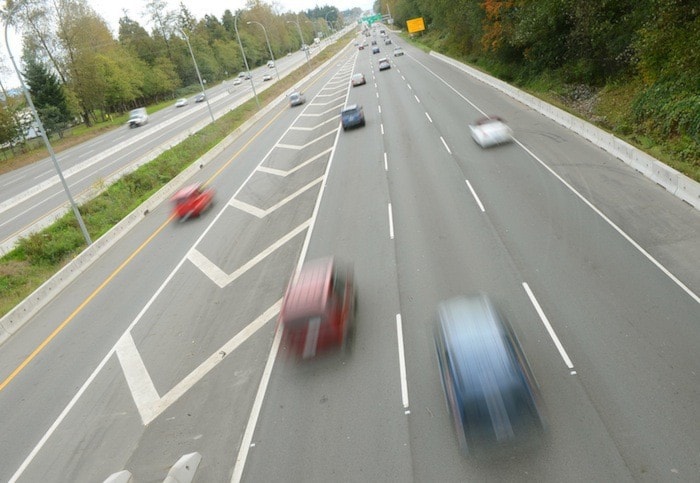Transportation Minister Todd Stone wants B.C. residents to weigh in on a potential increase in highway speed limits now under consideration.
Stone announced the formal review of speed limits Friday in Kamloops although he had previously indicated it was coming and technical work is already underway.
The Coquihalla Highway already has a speed limit of 110 kilometres per hour but traffic there does an average speed of 118, while drivers routinely exceed the posted limit of 90 or 100 on many other provincial highways.
"There's no question the Coquihalla is a prime candidate for an adjustment in the speed limit," Stone said, also listing sections of Highway 1 in the Lower Mainland and around Kamloops as well as the Cariboo Connector towards Prince George.
It's been a decade since B.C. last reviewed speed limits.
Stone said any increases would involve mainly rural provincial highways between communities, not highways in urban areas of the Lower Mainland, although which specific corridors to adjust will be subject to public input.
He said a higher speed limit in some stretches of highway has been made possible by billions of dollars in major road upgrades since the in 2003, including 180 additional kilometres of four- or six-lane highway.
He also said vehicles are "much safer today than 10 years ago" as a result of traction stability control, anti-lock brakes and other improvements.
Stone cited a 28 per cent drop in injury-causing collisions since 2003.
And he said research increasingly suggests the greatest danger isn't necessarily speeding itself, but driving at a much different speed than most other drivers.

A minority of 15 per cent of drivers who don't keep up with the flow or who speed excessively are at greater risk of a crash than the other 85 per cent of drivers who may be going somewhat over the posted speed limit, he said.
Stone stressed decreases in the speed limit are also possible.
"This review is not about increasing speed limits, it's about making sure we have the right speed limits."
And he said there will be "no Autobahn" in B.C. where speed limits are lifted altogether.
"I am not interested in making any changes that are going to compromise the safety of motorists."
He said one option could be variable speed limits that are higher in the day and lower at night.
The review will pull in fresh research from around the world, and closely consider factors unique to B.C., like its geography and high mountain passes.
The risk of crashes with wildlife will also be a key consideration.
Bright signs that warn of wildlife at night B��Ԫ������ַ� potentially activated by sensors that detect animals near the highway B��Ԫ������ַ� are among various options the ministry will consider to counter that risk, particularly on highways where posted limits might rise.
Stone said other technologies being tried elsewhere include automated sirens that scare wildlife off roads in areas where they pose a frequent hazard.
The speed limit review aims to generate recommendations by next spring, when the Legislature reconvenes.
Public forums on the issue will be held in Kamloops, Chilliwack, Vancouver, Nanaimo, Prince George, Dawson Creek, Cranbrook and Kelowna starting in November, with potentially more sites still to be added.
One group advocating for higher speed limits is Sense BC, which was behind a recent making the case for change:
Sense BC's Ian Tootill said even a 10 kilometre an hour increase on the Coquihalla to 120 wouldn't be enough to match the prevailing speeds in summer.
"I'm not suggesting the Coquihalla should be 150 or 160 but it shouldn't be 120," he said.
Tootill argues speed limits should be set at the upper end of what's safe B��Ԫ������ַ� allowing those who can drive that speed to legally do so B��Ԫ������ַ� while most motorists would go slower.
Others reacting on social media argued faster speeds would compromise safety and burn more fuel.
Some cities have also advocated for a lower default speed limit on urban streets of 40 kilometres per hour instead of 50, but that idea was defeated by a majority of delegates at last month's Union of B.C. Municipalities convention.
[]



